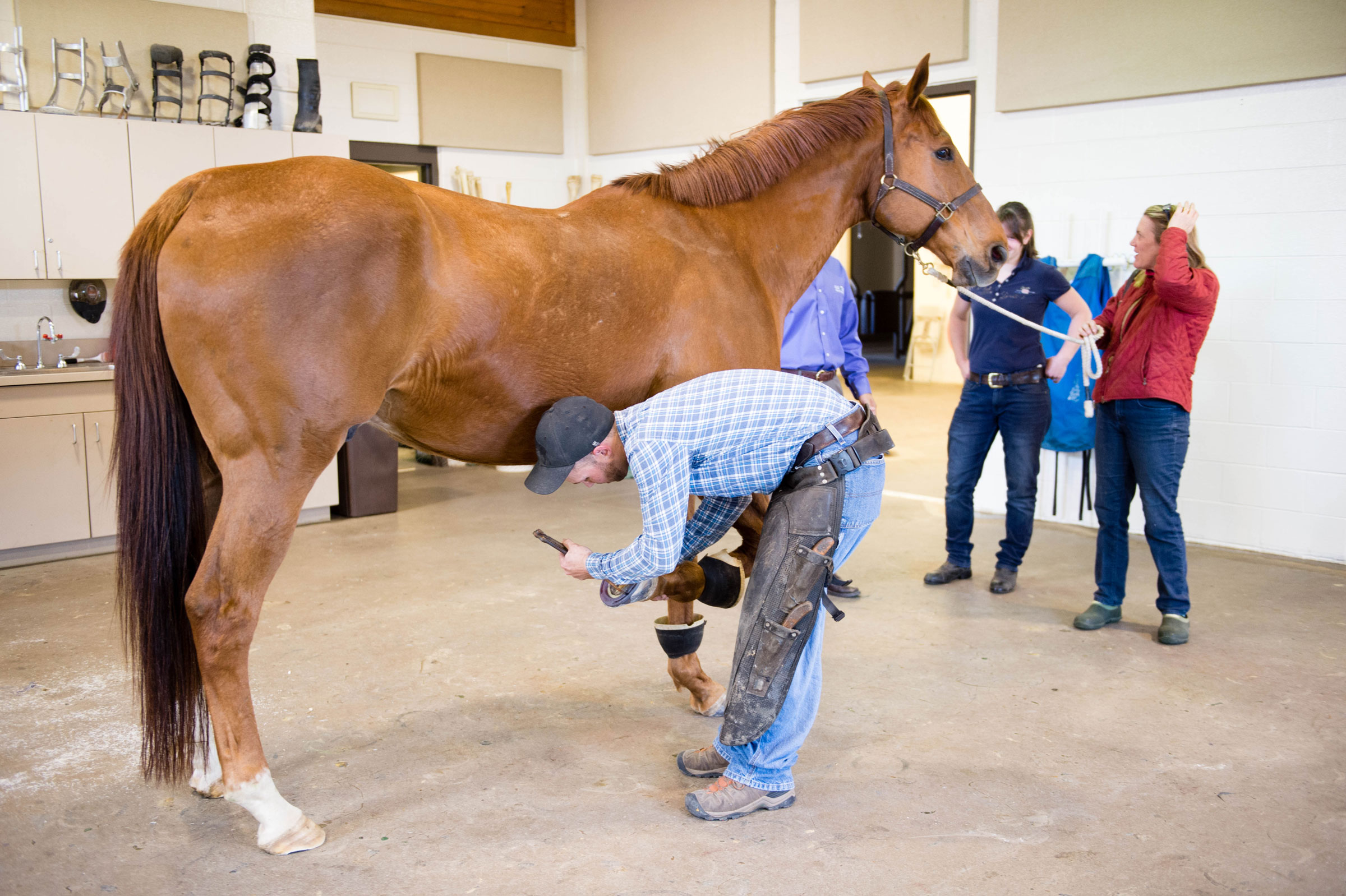
If the client is in the procedural zone, it is critical to prevent cross-traffic through this area.
After 17 years of practice, Dr. Mark Roozen has shifted his focus to advising veterinarians on the intricacies of business. His insight into the management and strategy of veterinary medicine comes from years of experience as a solo practitioner and his administration of a referral hospital.
How does an equine veterinary practice differentiate itself in a challenging market?
With tighter budgets and less free time, how do we help facilitate a better experience for clients who go out of their way to haul their horses to a hospital, even for routine care? The answer lies in the client experience. Following is a discussion between Heather E. Lewis, AIA, NCARB, and Mark Roozen, DVM, MBA, on focusing on a customer-oriented approach to equine veterinary practice.
Roozen: The dynamics of the equine practice are changing. Solo ambulatory practitioners are recognizing that they may not have the expertise, equipment or financial backing of the larger referral practices. This, combined with the ever-more-demanding horse owner, makes the best solution for some diagnostics and therapies to send the horse to a referral center.
Once in the truck, the clients have options for which direction to drive and expectations about how they spend their time and money. This means that efficiency and great customer service are critically important for referral hospitals that are trying to get the horse owner to pick their referral center over another. The competition between hospitals is increasing and it can be deadly for a veterinary practice to ignore the client experience.
Lewis: Efficiency begins from the moment a client drives onto the property. Physical design matters! A friendly unloading zone should allow easy access without requiring trailers to back up. Providing safe footing for the horses and making sure unloading zones are free of staff vehicles and equipment is essential. A visible perimeter barrier is important for containing the occasional loose horse.
Roozen: I’d take it one step further. The loading and unloading process is absolutely the most dangerous part of the entire transaction, and it should be handled professionally. You must prevent accidents to both humans and horses. Take care of the legalities and understand your client’s needs before the horse is unloaded. Once everyone is ready, have your most professional and best-trained staff assist with the unloading and loading processes. The client will feel reassured and it will help to avoid costly accidents. This also helps to emphasize your commitment to client service.
Lewis: I prefer covered check-in areas. It is important to encourage pre-unloading check-in processes, and staff members are more likely to do a good job if their work can be done out of the weather.
After unloading, what is the best way to facilitate a client’s participation in their horse’s care?
Lewis: Horse owners like to be part of the action, even when they are waiting. However, to completely eliminate the waiting area encourages clients to be in the way. A good compromise is a small, but comfortable, waiting area. In good weather, an ideal waiting area is an outdoor, shaded picnic bench that allows views to the barn and other “action” areas.
Roozen: People are curious, so to avoid problems with wandering clients, incorporate designed waiting areas that allow views to procedures, especially surgery. I’ve seen horse owners pull up a lounge chair and watch an entire surgery through the observation window.
For most circumstances, I believe in working in front of the client. What better way for a veterinarian to demonstrate expertise than by having clients observe? A veterinarian can do his or her job much more efficiently if the client is actively involved in the process. Clients don’t need to be holding the horse but they will be less likely to question the cost of services if they can see how much effort is put into their horse’s care.
Ultimately, it is up to the veterinarian and safety must always come first, but designing the procedure space with the client in mind can help create a safer and more engaging experience.
Lewis: If the client is in the procedural zone, it is even more critical to prevent cross-traffic through this area. Rooms should be large enough so that clients can safely stand out of the way. Consider privacy for each client by providing enough separation from one exam area to the next.
What about the design of the patient spaces? How can we help a client feel better about their horse’s care, especially overnight?
Lewis: Caring properly for a horse means thinking beyond the basics of safe and aseptic environments and considering a horse’s entire well-being. For example, natural daylight in a barn creates a more comfortable environment for horses and clients alike.
Roozen: The clients who are entrusting the overnight care of their horses to a veterinarian expect a safe environment; this means more than just an evening and morning check. The medical barn should be close enough to encourage staff to perform routine checks during the day, and the practice should support an overnight staff person to ensure horses’ night-time safety.
Lewis: This shift in focus toward the client experience will affect everything from how hospitals are staffed to the way that they are physically organized.
Roozen: We can no longer rely on the inherent draw of the referral hospital. Today’s horse owner is more acutely aware of the quality of the experience compared to the investment in time and money. You only have one chance to make a first impression!
Heather E. Lewis, AIA, NCARB, is a principal of Animal Arts, an architectural firm that has exclusively designed animal hospitals and animal-care facilities since 1979.








